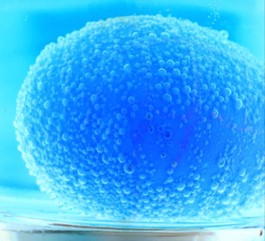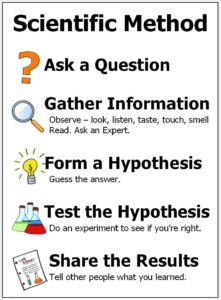Would you like to make a ghost egg just in time for Halloween? Here is an easy way to do just that and teach your child about science at the same time! It is definitely a favourite at our CEFA Early Learning schools – give it a try at home. It will mesmerize your child – I guarantee it!
Best Ages for This Activity
Two to five
How to Make It
Ingredients
- An egg (you can make more if you want)
- A glass or glass jar
- 1 can of tonic water
- 1 cup white vinegar
- A black light – I know that this is a little bit of an investment at $34, but a black light is fascinating to children, offers hours of play and can be used for many, many other activities I have on this site (just look up glow-in-the-dark). Plus, you can always use it yourself afterwards if you are in the mood for a throwback party with your spouse. You already have tonic water and the light – all you need is a little gin.
- Some white paper and a pencil, or a notepad and a pencil, for your child to draw their observations
Let’s get Started!
- Invite your child to try a science experiment using an egg and a magic potion that they can prepare to transform into a “ghost egg”
- Gather the ingredients
- In a cup or glass jar, mix in equal parts (for example, ½ cup and ½ cup) the tonic water and white vinegar. You will need enough to fully submerge the egg. If you have more than one egg, you can put them all in the same jar, but make sure there is enough liquid in it. This is your magic potion. To prove it, you can turn the lights off and shine the black light to it to see it beautifully glow in the dark.
- Invite your child to very carefully place an uncooked egg in your magic potion and watch with amazement as it gets enveloped in beautiful bubbles (turn on the black light for this)

- Over the next few days, something very special will happen, so encourage your child to visit their experiment often and journal their observations, noting any changes. If they are young, they can draw what they see in their notebook. If they are a little older, they can write about it too!
- Ask your child to predict what will happen and encourage them to write or draw their hypothesis in their notebook.
- After 7 days, you will be able to remove your egg from the jar and… ta-da! You now have a ghost egg! Much to your child’s amazement, you will discover that your ghost egg has no shell and is bouncy and completely translucent. As if that was not enough, your ghost egg also glows in the dark!
- You can compare your ghost egg with a new fresh egg, to show your child where they started and where they are now.
- Was it the magic potion? How did the egg become a ghost? What happened to it?
The Science Behind This Experiment
The acid in the vinegar completely dissolves the shell of the egg, leaving only its membrane intact.
Here is the chemical reaction that takes place:
The bubbles you saw forming on the shell are carbon dioxide (CO2). Vinegar is an acid called acetic acid (CH3COOH). Eggshells are made of calcium carbonate (CaCO3). The acetic acid in the vinegar reacts with the calcium carbonate in the eggshell to make calcium acetate plus water and carbon dioxide that you see as bubbles on the surface of the shell.
The egg also became a little bigger after soaking it in the magic potion. That is because some of the water in the vinegar solution (white vinegar is 96% water) traveled through the egg’s membrane to equalize the concentration of water on both sides of the membrane. This flow of water through a semipermeable membrane is called osmosis.
Learning Opportunities
Children will learn S.T.E.M., particularly math and science. By drawing their observations, they will not only be recording their findings (part of the scientific method) but also sharpening their drawing skills, which in turn helps their writing and penmanship skills.
Make sure you follow the scientific method:

Books Your Child Might Like
Toys Your Child Might Like
As an Amazon Associate I earn from qualifying purchases